Good to be back everyone.
I have been very busy with the stuff that life throws at you and have not been able to post anything for a while.
Well I am back for a new upgrade on my scoot. My last upgrade was a great HID headlight upgrade
(Link to HID thread)Here I will be changing all other indicator lighting to LED's. I will also be changing the 1156 (single filament) outlets to 1157 (dual filament) outlets to make the switch back lights function as I need them to. I am not recommending specific parts. I will tell you that all parts came from eBay. No one sponsored a single part or opinion here. I paid for everything myself.
The Scoot is still the Kymco Xciting 500cc 2007 to 2010 version. However there is little difference in doing this job on any scoot. I did it to my other scoot a CF Moto E-Charm just before I sold it. The only challenging portion of this was the changing of the sockets that hold the bulbs from single to dual contact.
Well first you need a few tools. Here is a photo of what I used. Nothing fancy just the basics.
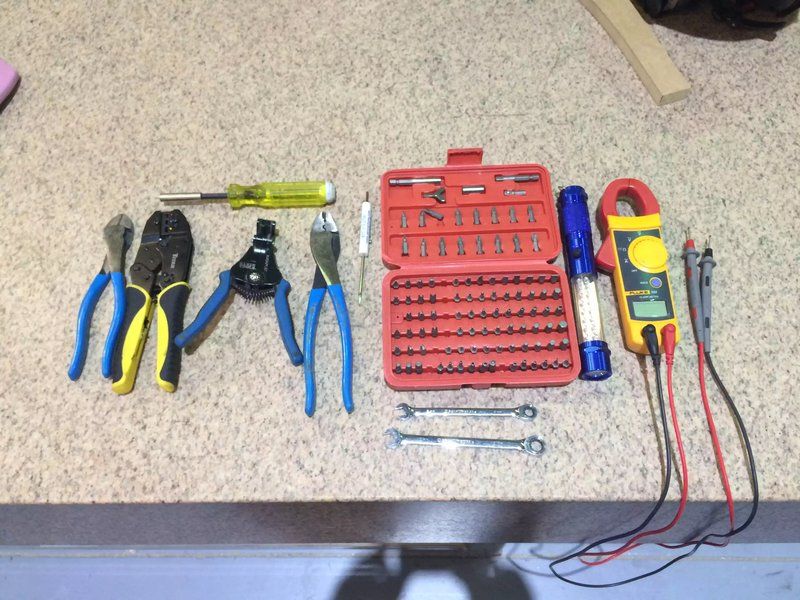
With my scoot I have a GIVI trunk and mount. This was the first part that need to be removed because the support arms block the removal of the clear tail light lens and the seat and liner block all access to the bolts retaining the light. housing. Also it is clearly necessary to remove the seat and full under seat trunk liner.
With these out of the way I have clear access to all areas and can now start removing the light housing.
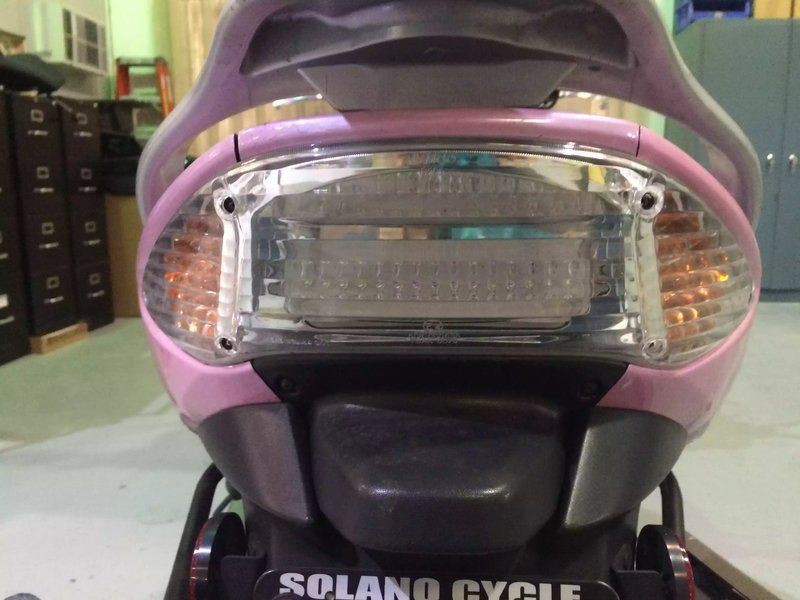
As you can see in the below photo the factory brake/tail light is already a nice LED array. Although this design is a bit dated as compared to what can be bought now it is still a very bright assembly that I will not be doing anything to.
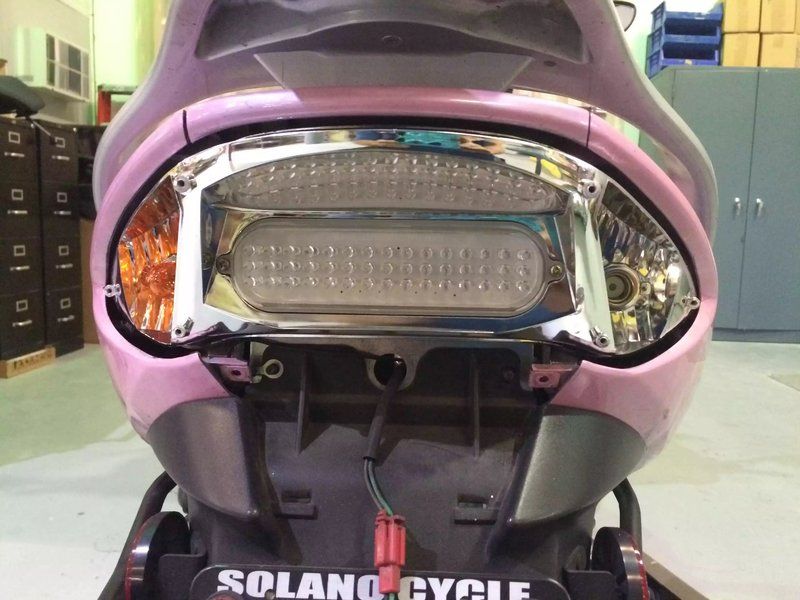
On the Xciting there are no less than 6 bolts you need to remove to allow the removal of the entire rear light housing. Your bike will most likely be different. But full removal is necessary so you can all the work needed easily on your bench.
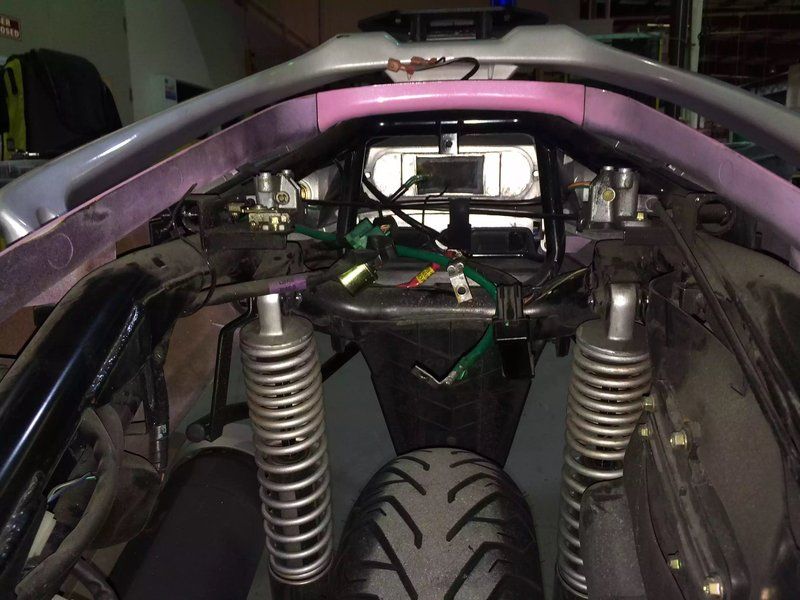
Once you get it free its time to go to the bench. On my scoot I have electrical connections going to my trunk, so the small cover panel had to come along also.
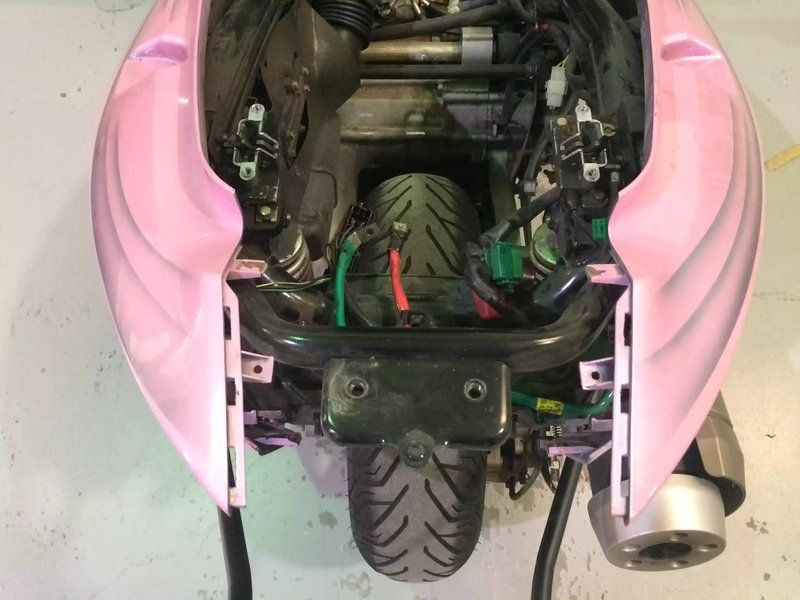
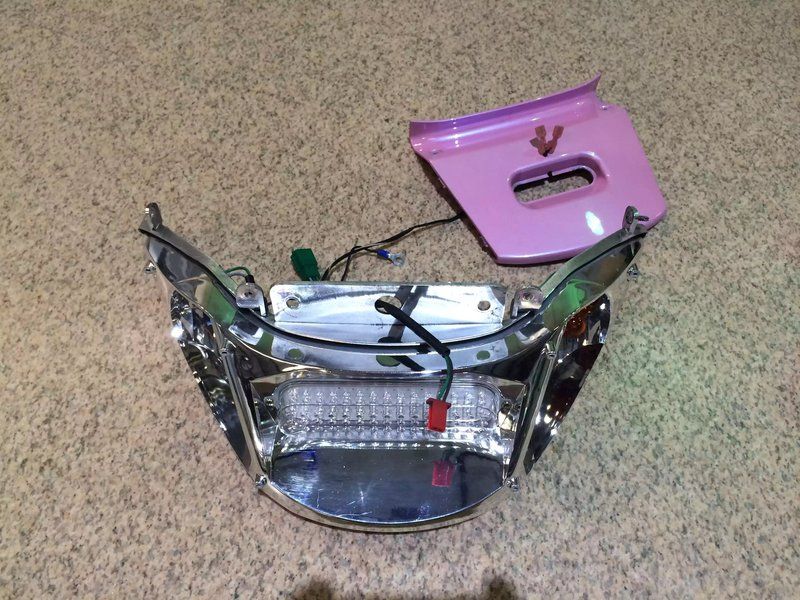
It is at this time I also removed the front of the scoot so I can also take it to the bench to modify the light sockets and to get to the flasher unit which also needs to be replaced.(If you need to see how to remove the front please look to my
HID headlight thread as there are good instructions for the Kymco Xciting there.) The factory flasher unit will NOT work with LED lights unless you go and add the resister packs that some recommend to use. I do NOT recommend you use the resistor packs as they take away one the biggest factors for using LED's, power savings.
Quick side bar here:
Many scooters, I believe all but the top brand scoots, design the electrical system to only provide about 5% or so above what the entire scooter needs for proper function. That means the electrical system is always working at about 95% of maximum. Anything you can do to lessen the load on your electrical system will pay off in much greater longevity of the system as a whole. By adding these matching resistors to the system you are adding extra current draw load to the system thus eliminating one huge advantage of LED's, far less power draw. This is why in my shop I have replaced 72 - HID lights that draw 450 watts each with 72 - LED lights that draw 180 watts each and give off 35% more light than the old HID lights. So I really suggest you DO NOT add load resisters to your system. Instead opt for changing the flasher unit to a LED compatible one. The unit I put in here is capable of handling 10 amps of current. So it will drive both LED and standard lights with no problem. Some of the LED flasher units have adjustable flash rates and some don't. I like the adjustable. they cost more but I think it is worth it.
Now the we have our parts on the work bench it is time for the technical part. This is not difficult really it just requires good attention to detail and time. Proceed slowly and methodically and this will work perfectly for you the first time.
Lets look at the bulbs I am using for this.
The front is getting set of white (6000K) / amber switch back LED bulbs. These bulbs will have a normal running of white giving much greater frontal illumination to the scoot in both day time and night driving. When you turn on the turning signal the white will shut off and the amber LED's will illuminate and the white will turn off. One second after the turn signal has canceled the white light will re-illuminate.
The rear is getting a pair of red / amber switch back LED bulbs. These I am wiring so they illuminate red when the brake is pressed and amber when the turn signal is used. These light up differently then the front light set. If you are just driving and turn on the turn signal they will light up and flash amber. If you are just driving and hit the brakes they will just light up in red. Now if you are braking and turn on the turning signal it will alternate red/amber/red/amber. As soon as you turn off the turning signal it will just remain steady red if the brake if still pressed. Now you can buy these to act like the front ones but I felt that the changing of the red to amber would garner more attention than just flashing amber. But you can buy either.
Also keep in mind that you could wire your rear lights to be running lights so they are always on. Or you can add a strober to the front lights causing them to flash like many older motorcycles have done with their headlights. It is up to you. All these options and more are just up to you. If you have any questions please email me.
Here you can see the dual contact pig tails I bought and a pair of LED bulbs. These bulbs are the Red/Amber ones.
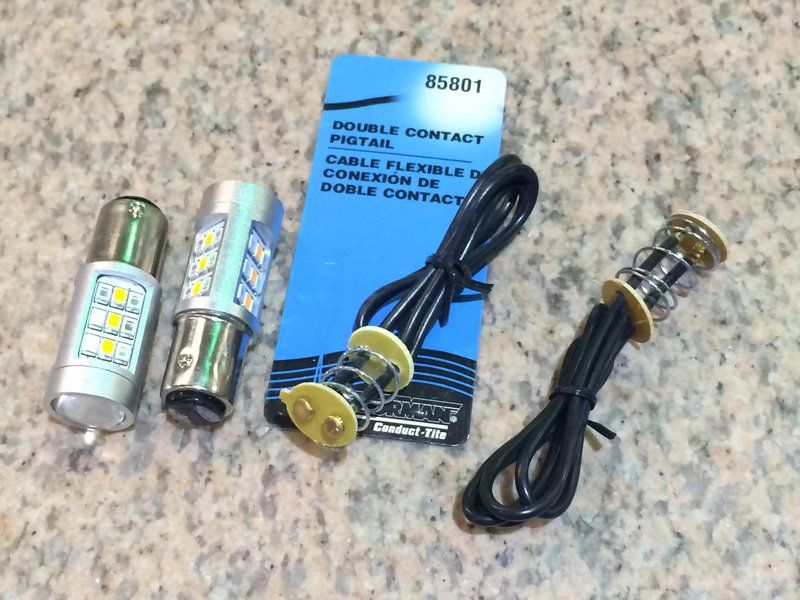
Seeing that we are going to be putting a offset bayonet 1156 bulb into a 1156 socket that in not made for off set bayonet we have to remove one of the bayonet nipples on the bulb base. this is easily done with a file and the use of elbow grease. Looking at the photo below you will see that the left bulb has both nipples while the one on the right has had one removed carefully. Don't worry, it will not come out as I have put 500 miles on the bike since this mod was made with ZERO issues. So remove the nipple that is further from the bottom.

I have since found a company that is making switch back LED bulbs that are dual contact but with the locking pins not offset. They were expensive. But I have seen their price drop about 30% in the last couple of months because they are selling more and more of them. So you can do this job either way as far as the mount goes.
You will need to cut the wire that goes into the socket and remove the original pig tail.
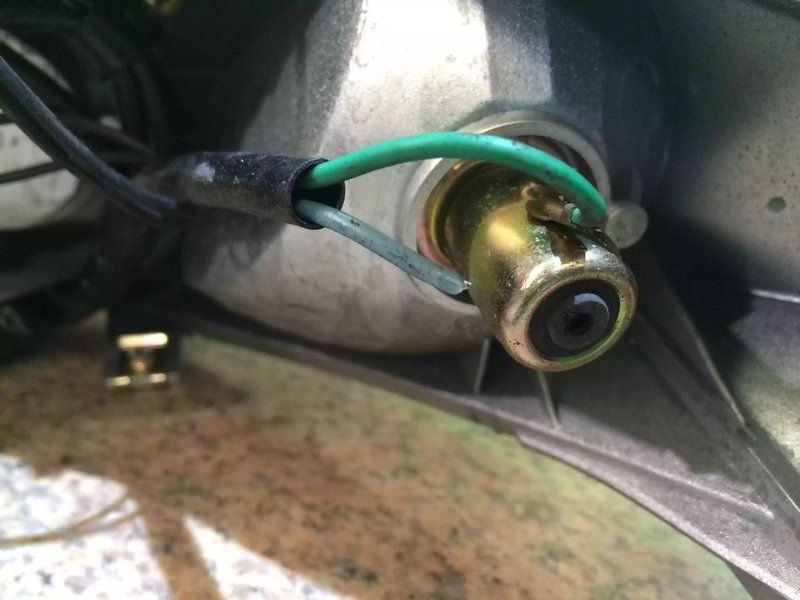
Now you can remove the spring loaded base from the socket.

Now grab the dual contact pig tail you have and take the bottom fiberglass round part off and replace it with the bottom fiberglass and rubber seal from the pigtail you just took off the light housing.
Before

After
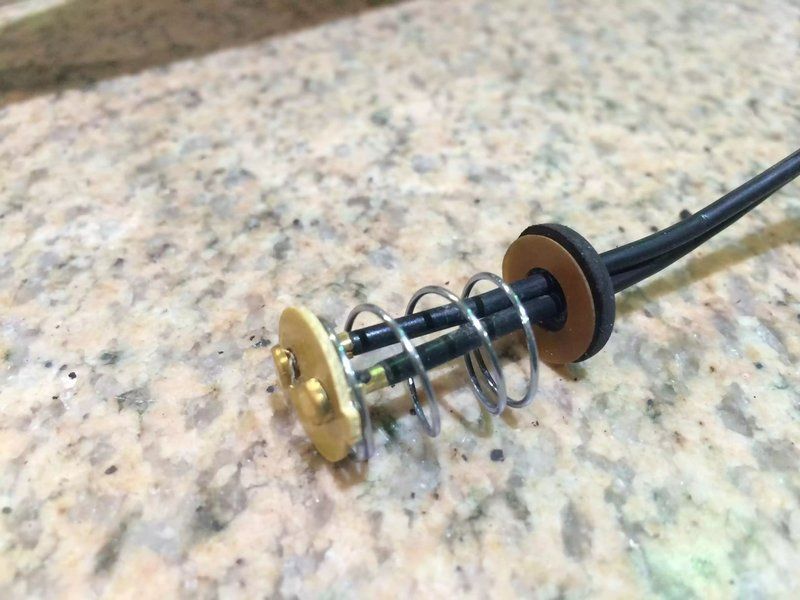
Now you have to understand how the dual pig tail needs to be orientated in the socket. Note the locking pin is 90 degrees to the contacts on the bottom of the bulb. Now in the socket in this light housing has the locking pins going vertical. This means that the pigtail contacts must line up horizontal. So sometimes this is easy, and sometimes it is not, insert the wires through the front of the socket and pull the contact base into the socket keeping the contacts horizontal. Below is a 1:30 video showing how I install the bulb at this point and figure out which wire powers each color.
Here is another 1:30 video that shows the connections and the testing.
Here is another 1:30 video showing both turn signals hooked up and the brake light circuit hooked and all tested.
Again as I said in the video seal your connections. Heat shrink, or self sealing connectors, or I like using self vulcanizing electrical rubber tape. If you leave this stiff open you are asking for problems down the line.
Now you have to do the same to the front just as you have done to the rear.
Here we have to now change the flasher unit.
The flasher unit is located up front generally close to the forks I have found in my experience.
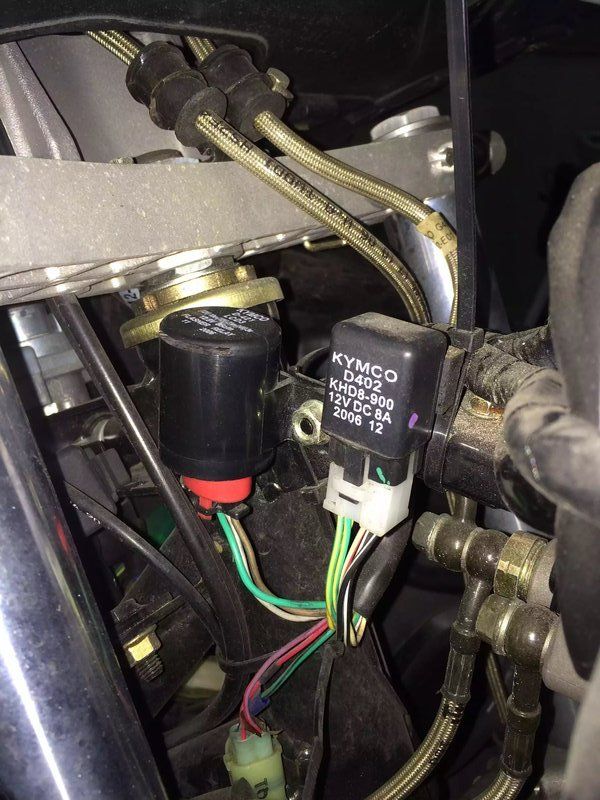
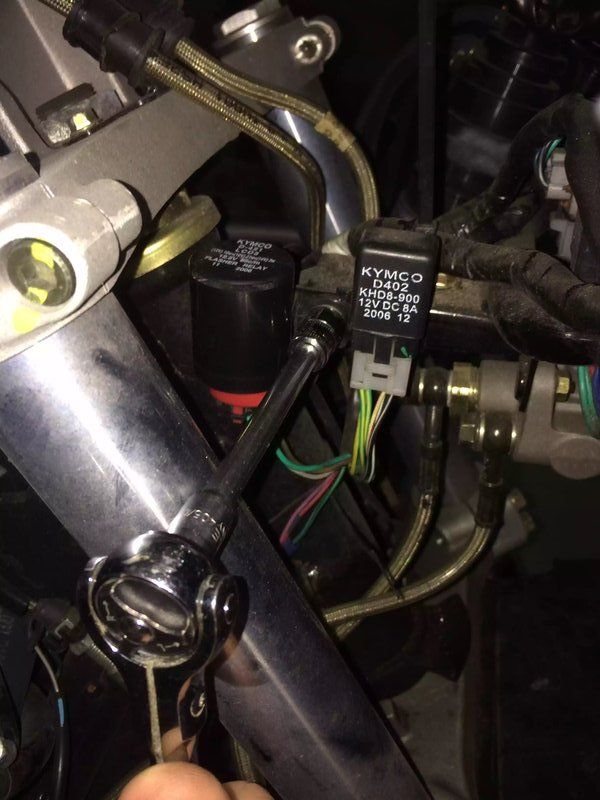
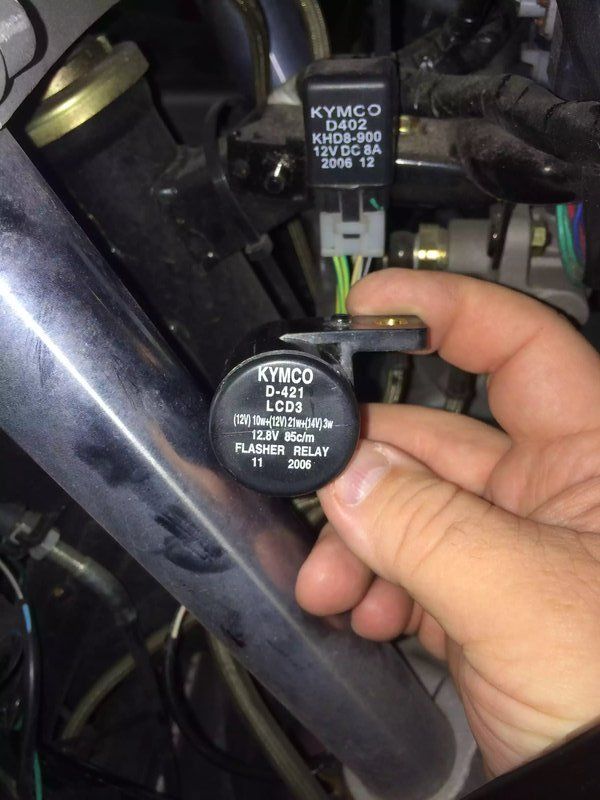
Now not all flasher units are the same. I have seen 1 to 5 connector points on these units. However most have 2 or 3 connection points. Check with a dealer or look on line and find out what your is. I went to the Kymco dealer and he told me that the Kymco one is 3 wire.
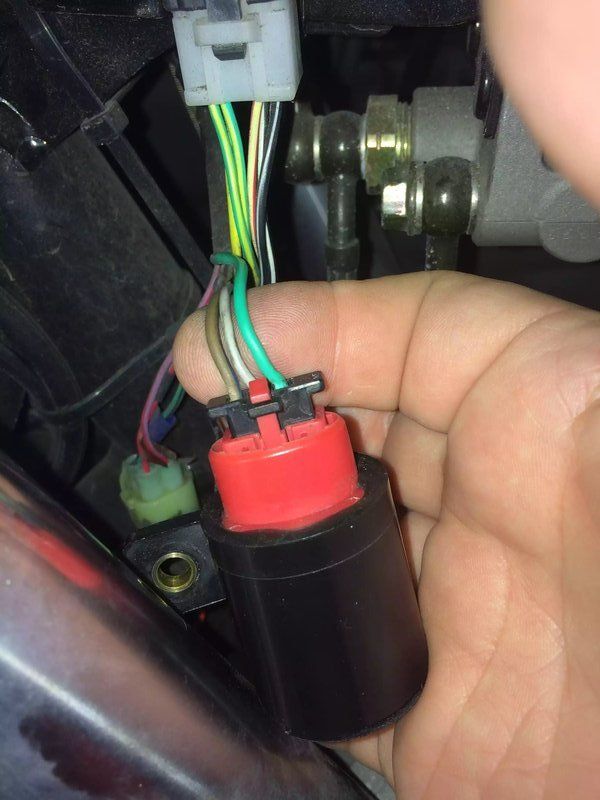
This is what the LED flasher unit I bought looks like. Notice how the unit is marked positive

), negative (-), and load (L). Fairly self explanatory I think. Now you will have to use your meter to determine (or brake out the wire diagram you can download on line) what color wires are +, -, and the load. Now if your doing a Kymco Xciting please see the below photos this may help.
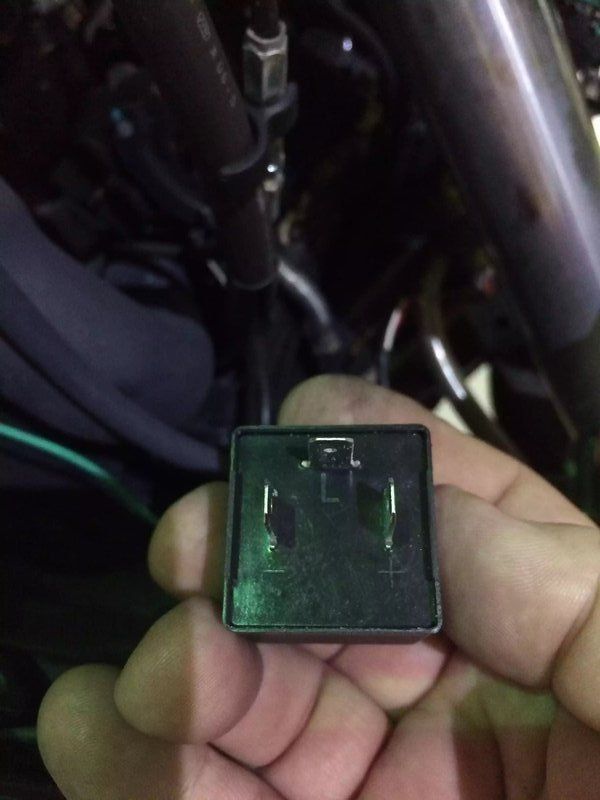
Also please take notice of the rod coming out of the top of the unit. This goes to the adjustment for how fast you want it to flash. No matter what the load is it will flash at the same rate. So install the rear lights and set your flash rate. You want to do this before the next step.
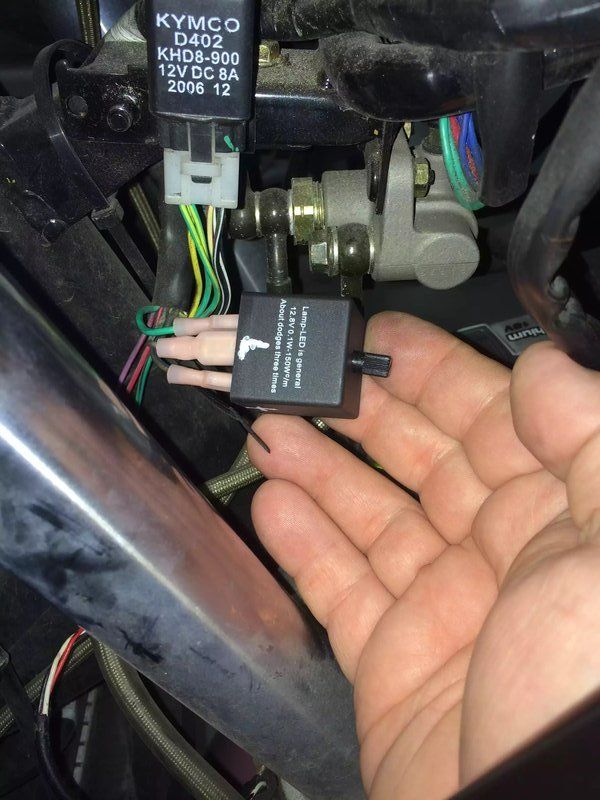
Here I put a plastic bag over the unit. Do not fully seal it. If you do try to fully seal it you will trap moisture in it and cause more problems down the road. This method allows it to be able to breath while protecting it from a drowning from the top. I have used this method many times and it works very good. Now I was unable to find an adjustable one that was water proof for less than around $45. So if you need to have a water proof one then pony up and pay for it. This unit was around $6.
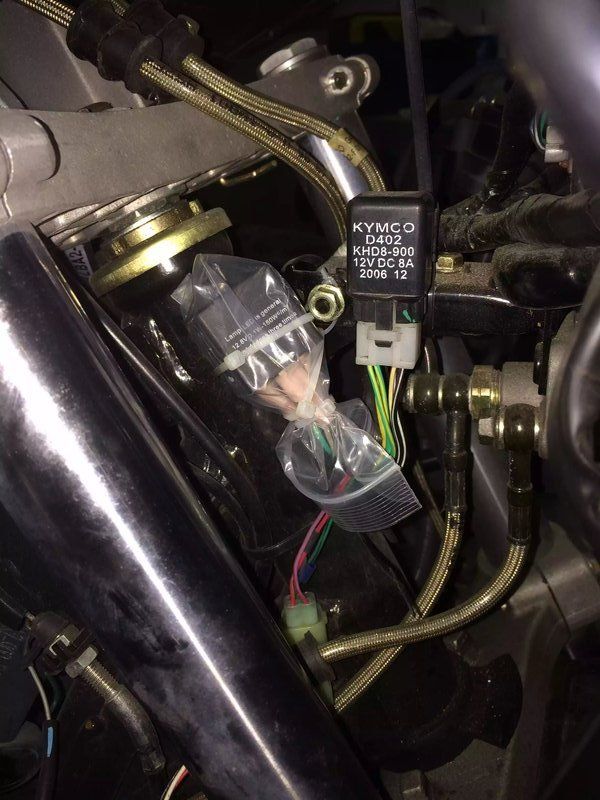
At this point you can put the whole thing back together again because all you have done should be finished.

